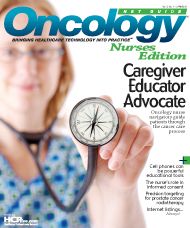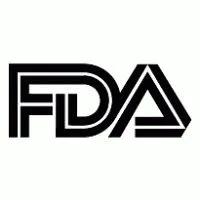Publication
Article
ONCNG Oncology Nursing
Putting it on the Line
The Changing Dynamics of Cancer Care and Support in the Cell Phone Age
A teenager finishes what she and her family hope will be the last in a series of chemotherapy treatments, and a celebratory trip to Disney World is underway. The teen feels a wave of nausea coming on while enjoying the festivities. She takes out her cell phone, text messages her nurse back home, and asks, “Is this a side effect of the chemo or the result of a ride on Space Mountain?” Scenarios like this are becoming more common for pediatric patients at Dana-Farber Cancer Institute’s Jimmy Fund Clinic. Whereas having a serious disease like cancer once tethered patients and their families close to home, now cell phones, personal digital assistants (PDAs), and other handheld digital devices are making it possible for patients and their families to take vacations far from home and enjoy other pleasures that were once denied by cancer.
E-mail communication between children with cancer and their caregivers, particularly nurses, is nothing new at the Jimmy Fund Clinic. Communication by cell phone has simply been the next step.
Even seemingly little things, like a pager for a parent dealing with an anxious, restless child in a waiting room, can improve the clinic experience for both patient and provider. “There’s often quite a bit of wait time to see a doctor or nurse when you get to the hospital,” says Dr. Marsha Fonteyn, a nurse scientist at the Dana-Farber Cancer Institute and member of the Oncology Nursing Society. “Parents of young patients or teenagers themselves are given a beeper, much like you’d get at a restaurant, and paged when it’s their turn. It works throughout the whole hospital, so they don’t have to stay in the waiting room.”
Between visits, cell phones have quickly become an integral—and popular—component of pediatric cancer care at the Jimmy Fund Cancer Clinic. “Patients typically call their nurses about symptom management and management of their side effects from chemotherapy,” Fonteyn says. “For example, if an older child was prescribed antibiotics and becomes immunocompromised, he or she can call the hospital and give details about what’s going on. We can then tell the patient whether he or she needs to come in or if a symptom is nothing to worry about. Or a parent of a child who suddenly starts exhibiting gastrointestinal symptoms like vomiting, diarrhea, or poor appetite can call and ask if it’s normal. You want them to be able to get in touch with you so they don’t run the risk of a possible complication that may cause their status to deteriorate.”
The success of the cell phone program at the Jimmy Fund Clinic was outlined by Annie Beauchemin, RN, BSN, CPON, and Robin O’Connell, RN, BSN, CPON, during a poster session at the 2005 National Conference of the Association of Pediatric Hematology/Oncology Nurses in Portland, OR. “For patients and families, the use of cell phones creates instant access to nurses, and preliminary feedback from patients and families indicates high levels of satisfaction with this method of communication,” they said. “For staff , using cell phones saves time and increases opportunities for direct interaction with patients and families.”
Cell phones also provide the immediacy of symptom reporting, which is often vital to clinical trials; about 95% of patients at the Jimmy Fund, according to Fonteyn, are enrolled in trials. “You want them to follow their regimen very closely. Instant reporting of side effects can impact the results of a clinical trial.”
Did you remember your medicine?
Perhaps one of the most obvious and immediate uses of cell phones in cancer patient care is as a pocket medication reminder. Proper adherence to medication dosage and schedule has a direct impact on the quality and efficacy of cancer care. Medication reminders not only help the patient, but also his or her home caregivers, who suddenly find themselves responsible for helping a loved one get through the challenge of cancer.
“The cell phone is ubiquitous today,” says John Maschenic, associate director for healthcare and head of sales and marketing for Verizon’s Pill Phone. “There’s one on every hip.” The Pill Phone is actually an application that can be downloaded to most cell phones, whether Verizon or another brand, for about $4 per month. It stores, updates, and provides photographs and generic conversions for roughly 1,800 prescription and OTC medications. It also offers a medication reminder feature, which allows users to schedule automatic reminders to take the right medicine at the right time. But as Maschenic discovered, caregivers are finding the feature to be extremely helpful as well.
One thing cell phones cannot yet do, however, is make sure someone actually took their medicine. “The healthcare industry knows medication compliance is based on the honor system,” says Maschenic. “Say I’m the caregiver for an elderly parent. I receive an automatic text message on my phone saying which medication grandpa took and when grandpa enters it into his cell phone. But if grandpa gets sick, and there’s a record of him saying he took his medication, we know we have to take a closer look as to whether he’s really taking his medication or his medication is no longer working.”
The success of the Pill Phone means it is now being considered for expansion beyond the patient and caregivers. “Now that we’re out in the field, we’ve been engaging healthcare providers, like pharmacists, to use the phone records to see if a medication is being filled on time,” Maschenic says. “If a medication that is supposed to last 30 days hasn’t been filled in 47 days and the patient ends up in the emergency room, it is critical for the physician to have this information. They’re looking at the Pill Phone as another tool to help avoid acute emergencies.”
Bigger than the stethoscope
The integration of the cell phone into patient care and patient—provider communication is not without irony. Not so long ago, large signs in most hospitals warned people to shut their cell phones off for fear of interfering with medical equipment. Now, thanks to advances in cell phone design, doctors and patients are rarely seen in hospital hallways without a phone in their hand.
“In a couple of years, I see the cell phone as being a tool with many functions and options that will make a big difference in patient care,” says Peter Waegemann, CEO of the Medical Records Institute and director of the Center for Cell Phone Applications in Healthcare (C-PAHC). “Next to the stethoscope, it will be the most prized individual item a provider could have.”
In many ways, according to Waegemann, the US is playing catch-up with the rest of the world when it comes to using cell phones as a tool in patient care and management. In many developing countries, a small remote village may be more likely to have a wireless community cell phone instead of a computer requiring a DSL line. In one particularly dramatic case, Waegemann tells of a nurse in Africa who performed a life-saving amputation guided by 15 instant messages sent by a colleague in London.
European countries are also ahead of the United States when it comes to integrating cell phones into oncology care. The Institute of Child Health in London has started using a cell phone-based Advanced Symptom Management System for Young People (ASyMS©-YG) with positive results. Young people age 13-18 years with cancer receive their own PDAs and report by questionnaire how they’re feeling after a chemotherapy treatment, complete with a body diagram to show where they were feeling pain. Results are sent to a central database at the clinic, where nurses can view and track their symptoms. Based on the responses, patients automatically receive a text message telling them what to do, or if severe, receive a call from the nurse. Recently, a function enabling patients to receive advice about managing common symptoms like constipation and diarrhea was added. If severe, a nurse is paged to call the patient to offer personal advice and support.
News of these successes have prompted US oncologists, according to Waegemann, to embrace the cell phone and become eager to combine it with computers and other electronic communication devices to promote meaningful interaction with patients. “By the end of 2009, I predict people with cancer will be able to call their doctor, send insurance information, and tell their oncologist what other doctors they saw, all on their cell phone,” he says. “The cell phone will be used from the very beginning to remind patients to take their medication. Whereas oncology patients were once on their own dealing with side effects, they are now sharing information with hundreds of thousands of patients and oncology groups everyday. They’ll be able to communicate with their oncologists more but see them less, which is what many patients seem to want.” Waegemann says C-PAHC expects to announce more potential uses of the cell phone in cancer care of specific interest for oncology nurses.
Do you use your cell phone to call or text patients as part of their treatment? How would you handle a patient who constantly calls?
Changes and challenges
Knowing their nurse is just a text message away may be a big comfort to people with cancer, but it poses a new challenge to their nurses. Even while hailing the success of the Jimmy Fund Clinic model, Beauchemin and O’Connell say nurses must utilize creative time management strategies, since the pager and cell phone can be going off at the same time that they are accessing a port, comforting a family with a dying child, or checking chemotherapy with a co-worker. Responding to messages from a blinking cell phone or a chirping BlackBerry, the nurses note, “requires focused time and effort.”
Cell phone medicine, Fonteyn acknowledges, does require some juggling, but she ultimately feels that it is worth the adjustment. “Actually, in the long run, it may make your practice run a little smoother when you find you are not having to deal with as many acute crises because you will have been able to ward them off ,” she says. Her advice? “Try starting with a group of patients you are most concerned about—perhaps by first encouraging them to contact you by e-mail. See if it makes a difference in the number of unexpected visits you receive.” Many doctors, she says, are becoming more willing to incorporate changes like these into their practices if they are convinced of their value. There are those oncology practices that regard the idea of integrating cell phones into patient management with wariness, but as more patients become aware of these services, they may have little choice.
“Patients are even willing to pay an extra $10 to $20 a month, even $50 a month in cities like New York, to have access to their nurse oncologists by e-mail or IM,” Waegemann says. Doctors who collaborate by cell phone with patient support groups, he adds, have the potential to generate even more income by providing their patients with a handheld portal that enables “hundreds and thousands of cancer patients to become part of a community,” giving them access to even more support. “It is a very different practice model,” Waegemann says when comparing traditional doctor—nurse–patient communication with the era of the cell phone. “Some don’t like it, and some do. But the bottom line is that you can’t stop it—it will happen.”
Diane West is a freelance healthcare journalist. “Tell Me Where it Hurts,” her article on communicating with patients about pain, appeared in the January 2009 issue of MDNG: Pain Management Edition.






